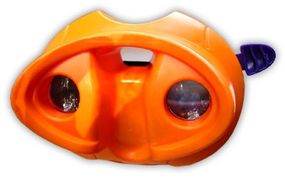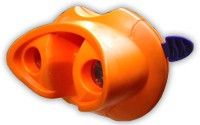Binocular Vision
Most human beings come equipped with two eyes and an absolutely amazing binocular vision system. For objects up to about 20 feet (6 to 7 meters) away, the binocular vision system lets us easily tell with good accuracy how far away an object is. For example, if there are multiple objects in our field of view, we can automatically tell which ones are farther and which are nearer, and how far away they are. If you look at the world with one eye closed, you can still perceive distance, but your accuracy decreases and you have to rely on visual cues, which is slower.
To see how much of a difference the binocular vision system makes, have a friend throw you a ball and try to catch it while keeping one eye closed. Also try it in a fairly dark room or at night, where the difference is even more noticeable. It is much harder to catch a ball with only one eye open than with two eyes open. If you want to try a quick test of your binocular vision, visit this Web site.
Advertisement
The binocular vision system relies on the fact that our two eyes are spaced about 2 inches (5 centimeters) apart. Therefore, each eye sees the world from a slightly different perspective, and the binocular vision system in your brain uses the difference to calculate distance. Your brain has the ability to correlate the images it sees in its two eyes even though they are slightly different.
If you've ever used a View-Master or a stereoscopic viewer, you have seen your binocular vision system in action. In a View-Master, each eye is presented with an image. Two cameras photograph the same image from slightly different positions to create these images. Your eyes can correlate these images automatically because each eye sees only one of the images.

